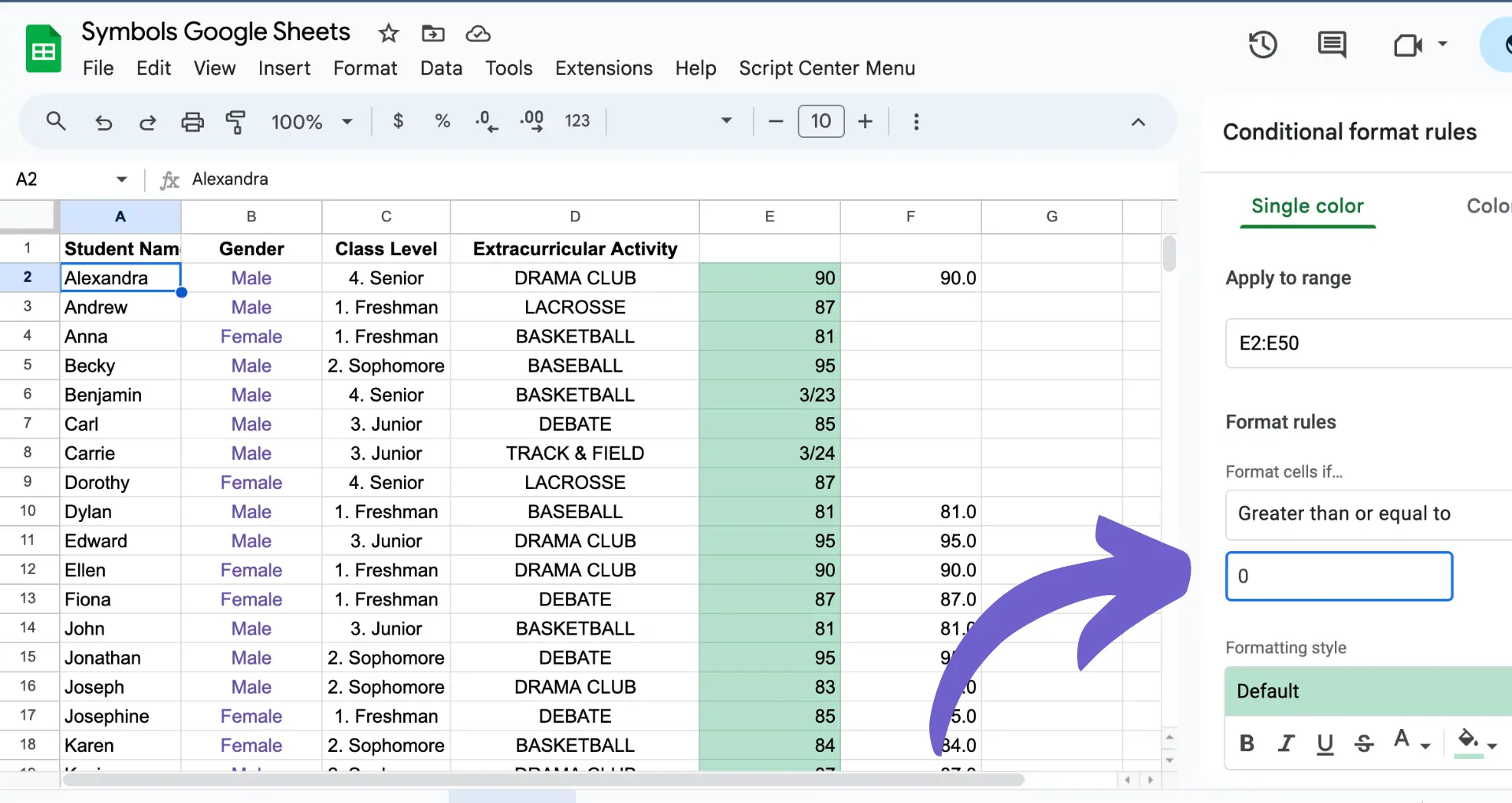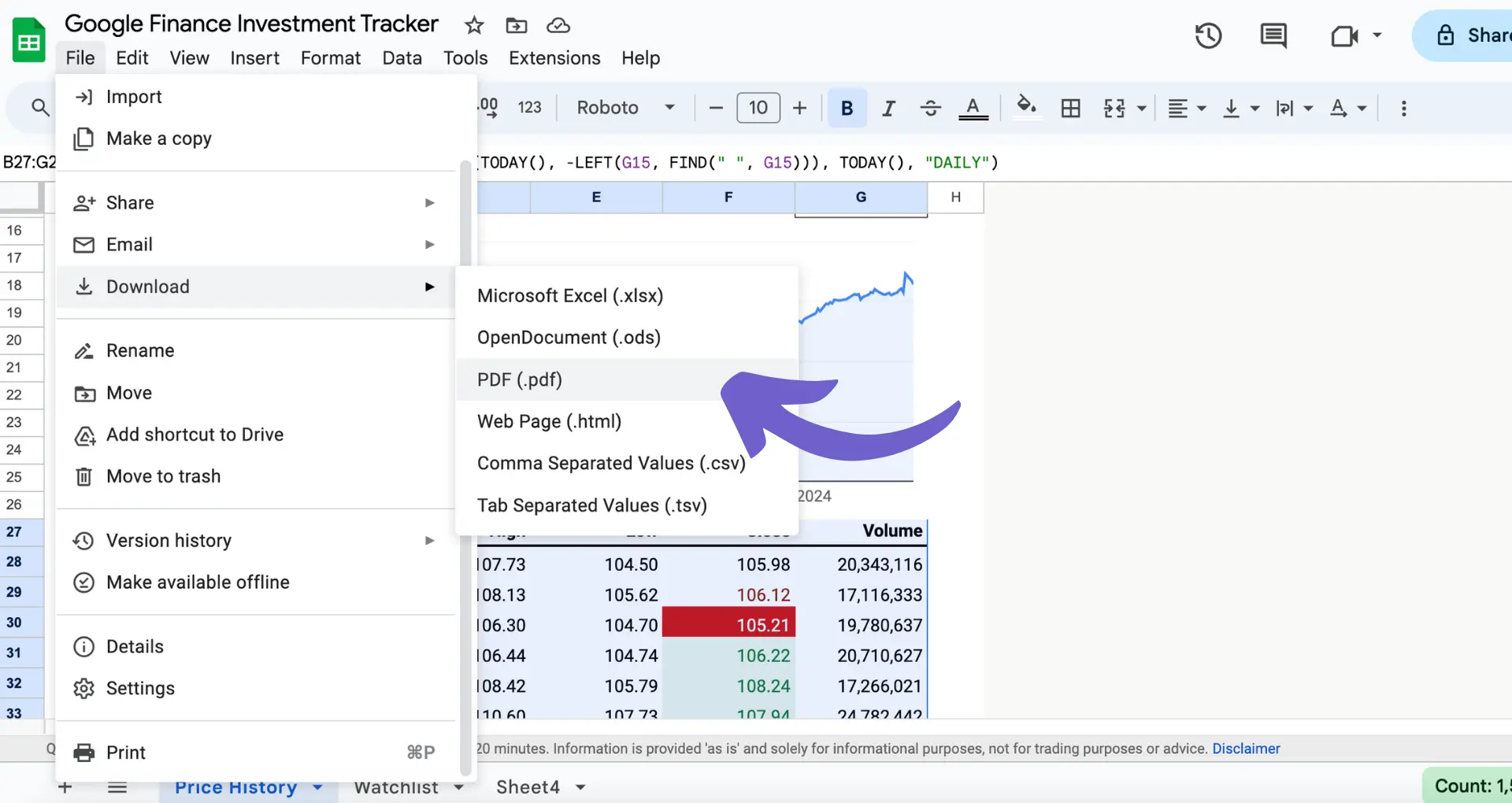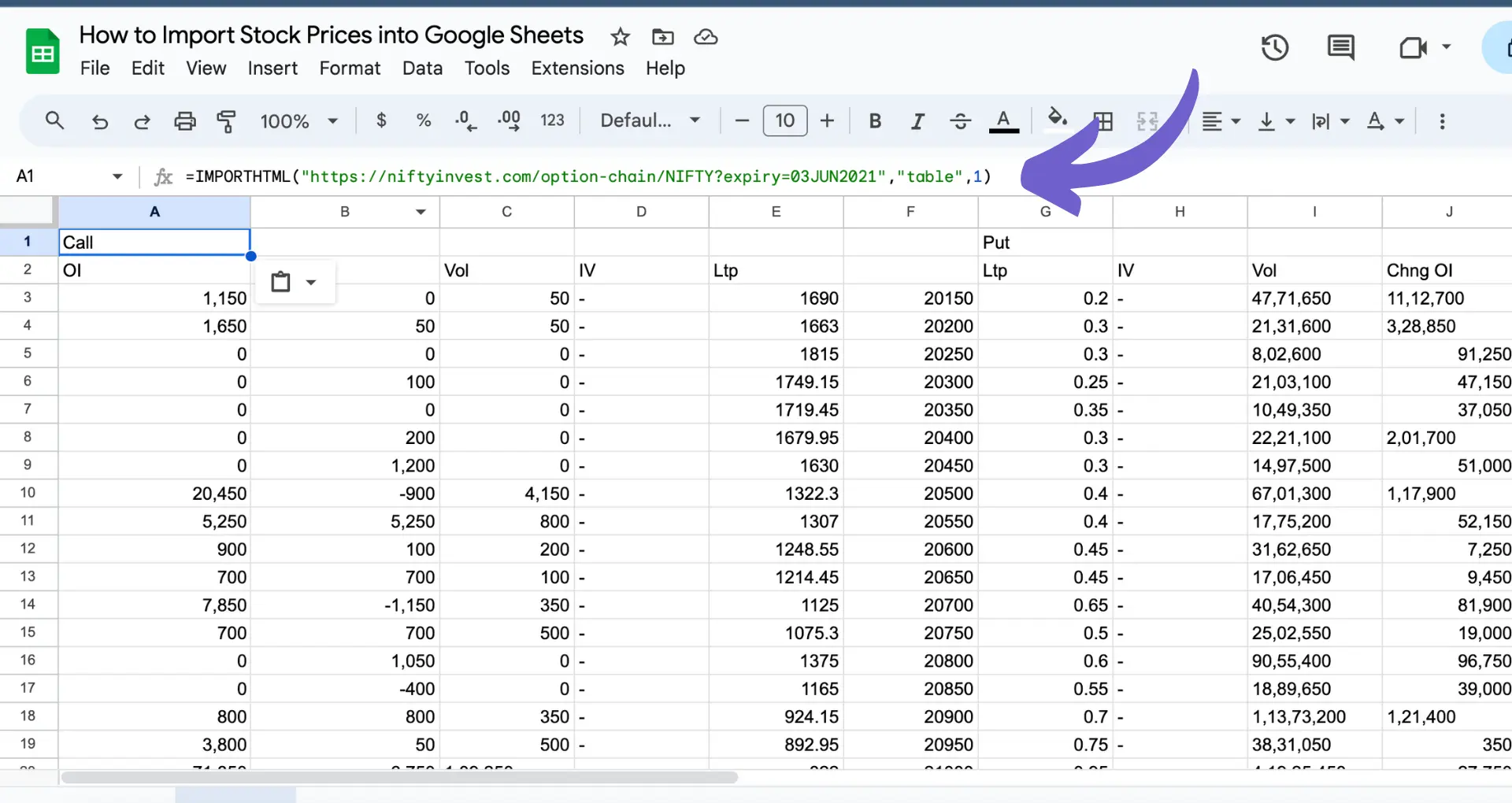





Use ABS or multiply by -1 to convert negatives to positives.
By the way, we're Bardeen, we build a free AI Agent for doing repetitive tasks.
If you handle data in Google Sheets, try our GPT in Spreadsheets. It can automate data transformations and more to save you time.
Converting negative numbers to positive values is a common task in Google Sheets, especially when working with financial data or performing calculations. In this step-by-step guide, we'll explore various methods to transform negative numbers into their positive counterparts, including using the ABS function, multiplying by -1, and applying Find and Replace. We'll also cover advanced techniques like conditional formatting and automating conversions with Google Sheets scripts.
The ABS function in Google Sheets is a built-in formula that returns the absolute value of a specified number. In other words, it converts any negative number to its positive equivalent, while leaving positive numbers unchanged. The syntax for the ABS function is simple: ABS(value)where "value" is the number or cell reference you want to convert.

Using the ABS function is particularly helpful when working with financial data or performing calculations that require positive values. Some common use cases include:
To use the ABS function, simply enter the formula =ABS(number) in a cell, replacing "number" with the actual value or cell reference you want to convert. For example, =ABS(-25) would return 25, and =ABS(A1) would return the absolute value of the number in cell A1.
Bardeen can help streamline the process of getting data into Google Sheets for analysis using the ABS function. Try these playbooks to quickly import various types of data:
If you want to enhance your Google Sheets usage, you can bring AI into your spreadsheet to streamline various tasks.
To apply the ABS function to a single cell containing a negative number, follow these steps:
=ABS( in the cell.For example, if cell A1 contains -50, you would enter =ABS(A1) in another cell to get the absolute value, which is 50.
To apply the ABS function to multiple cells at once, you can use the drag feature or the ARRAYFORMULA function in Google Sheets:
=ARRAYFORMULA(ABS(range)), replacing "range" with the actual range of cells containing the negative numbers.For example, =ARRAYFORMULA(ABS(A1:A10)) would return the absolute values of all numbers in cells A1 through A10 in a single step.
Bardeen can automate many repetitive tasks in Google Sheets, saving you significant time. It can help you populate spreadsheets with data from various sources or by applying functions to existing data. Try these playbooks:
If you work with spreadsheets often, consider using Bardeen to automate repetitive tasks in Excel, saving you even more time.
Save time on spreadsheets by using Bardeen to connect Microsoft Excel for automated workflows.
Another way to convert a negative number to a positive is by multiplying it by -1. This simple mathematical operation changes the sign of the number without altering its absolute value.
In Google Sheets, you can use the multiplication operator (*) to change the sign of numbers in a cell or range. Here's how:
= followed by the cell reference containing the negative number.*-1 after the cell reference.For example, if cell A1 contains -25, you would enter =A1*-1 in another cell to get the positive value, which is 25.
Bardeen can help automate the process of extracting data with negative values from various sources and converting them to positive values in Google Sheets:
To apply this method to a range of cells, you can use the ARRAYFORMULA function:
=ARRAYFORMULA(range*-1), replacing "range" with the actual range of cells containing the negative numbers.For instance, =ARRAYFORMULA(A1:A10*-1) would return the positive values of all numbers in cells A1 through A10 in a single step. For more advanced data manipulation, consider using GPT in Google Sheets to enhance your workflow.
Google Sheets' Find and Replace feature offers a quick way to convert negative numbers to positives by removing the negative sign. Here's how to do it:

This method is particularly useful when you have a large dataset with many negative numbers that need to be converted. It saves time compared to manually editing each cell or applying a formula to every cell in the range.
Need to update a lot of data quickly? Use Bardeen to connect Google Docs and automate your tasks.
However, keep in mind that this method permanently alters the original data. If you need to preserve the original negative numbers for future reference or calculations, it's best to create a copy of the data before using Find and Replace.
Bardeen can help streamline getting data into Google Sheets from various sources, while still preserving the original information. Try these playbooks to quickly pull in external data:
Additionally, the Find and Replace method only works if the negative numbers are not the result of a formula. If the negative values are calculated by a formula, you'll need to use one of the other methods, such as the ABS function or multiplying by -1, to convert them to positives. For example, you can scrape data from websites to automate data entry and avoid manual errors.
Conditional formatting in Google Sheets allows you to visually differentiate between original negative values and converted positive values. Here's how to set up conditional formatting rules to color-code cells based on their sign:
Bardeen can help automate the process of getting data into Google Sheets for analysis. Try these playbooks to save time on data collection:

Now, your original negative numbers will be highlighted in red, while the converted positive values will be highlighted in green. This makes it easy to identify which numbers were originally negative and which were always positive.
You can also use conditional formatting for prospect lists to create color scales, which apply a gradient of colors based on the values in the cells. This is useful for quickly identifying the highest and lowest values in a range.
Remember that conditional formatting rules are applied in the order they are listed. If you have multiple rules, you can click and drag them to reorder as needed. You can also edit or delete rules by hovering over them and clicking the corresponding buttons.
For larger datasets, manually converting negative numbers to positive using the ABS function or Find and Replace can be time-consuming. Google Apps Script offers a way to automate this process across entire sheets.
To get started with Google Apps Script:
Here's a basic script that converts all negative numbers in a specified range to their positive equivalents:
function convertNegativesToPositive() {
var sheet = SpreadsheetApp.getActiveSheet();
var range = sheet.getRange("A1:D10"); // Change to your desired range
var values = range.getValues();
for (var i = 0; i < values.length; i++) {
for (var j = 0; j < values[i].length; j++) {
if (values[i][j] < 0) {
values[i][j] = -values[i][j];
}
}
}
range.setValues(values);
}
To use this script:
The script will convert all negative numbers in the specified range to their positive equivalents. You can modify the script to suit your specific needs, such as changing the range, looping through multiple ranges, or even processing the entire sheet.
Bardeen offers a no-code alternative to automate tasks in Google Sheets, making it easy to import and enrich data from various sources while ensuring proper formatting. Try these playbooks to streamline your data management:
Remember, scripts can be powerful tools for automating repetitive tasks in Google Sheets, but they should be used with caution. Always test your scripts on a small range of data before applying them to larger datasets to ensure they function as expected. For more advanced automations, you might want to explore how to automate lead management with tools like Bardeen.
Bardeen can save you time by automating tasks like enriching LinkedIn profiles directly in Google Sheets. Let Bardeen handle the repetitive work so you can focus on what matters.
When converting negative numbers to positive in Google Sheets, there are a few common issues that users may encounter:
To troubleshoot and ensure accurate conversions, follow these tips:
Remember, it's always a good idea to keep a backup of your original data before making any significant changes, such as converting negative numbers to positive. This way, you can easily revert to the original dataset if needed.
By being aware of these common pitfalls and following best practices for troubleshooting, you can ensure that your negative-to-positive conversions in Google Sheets are accurate and reliable.










SOC 2 Type II, GDPR and CASA Tier 2 and 3 certified — so you can automate with confidence at any scale.
Bardeen is an automation and workflow platform designed to help GTM teams eliminate manual tasks and streamline processes. It connects and integrates with your favorite tools, enabling you to automate repetitive workflows, manage data across systems, and enhance collaboration.
Bardeen acts as a bridge to enhance and automate workflows. It can reduce your reliance on tools focused on data entry and CRM updating, lead generation and outreach, reporting and analytics, and communication and follow-ups.
Bardeen is ideal for GTM teams across various roles including Sales (SDRs, AEs), Customer Success (CSMs), Revenue Operations, Sales Engineering, and Sales Leadership.
Bardeen integrates broadly with CRMs, communication platforms, lead generation tools, project and task management tools, and customer success tools. These integrations connect workflows and ensure data flows smoothly across systems.
Bardeen supports a wide variety of use cases across different teams, such as:
Sales: Automating lead discovery, enrichment and outreach sequences. Tracking account activity and nurturing target accounts.
Customer Success: Preparing for customer meetings, analyzing engagement metrics, and managing renewals.
Revenue Operations: Monitoring lead status, ensuring data accuracy, and generating detailed activity summaries.
Sales Leadership: Creating competitive analysis reports, monitoring pipeline health, and generating daily/weekly team performance summaries.